The effects of performance-based feedback on early childhood teachers use of recommended practices and outcomes for children
Authors: Erin E. Barton, Jennifer Bancroft, Brandy Locchetta, Elizabeth A. Pokorski, Claire Winchester, Marina Velez, Ana Paula Martinez, & Lauren Gomez
Summary
Researchers have found that electronic feedback (e.g., email, text message) can be an effective and efficient method for delivering PF (Artman-Meeker & Hemmeter, 2013; Barton, Fuller & Schnitz, 2016; Hemmeter, Snyder, Kinder & Artman, 2011; O’Flaherty et al., 2019; Simonsen, Myers, & DeLuca, 2010). Further, varied forms of electronic feedback (i.e., email, text message) have been found to be effective at changing teacher behaviors (Artman-Meeker & Hemmeter; 2013; Barton et al., 2016; Barton et al., 2019b). Ongoing email PF also might promote dialogue and build rapport between the coach and teacher receiving feedback, without the time commitment and scheduling challenges of a face-to-face meeting. To date, no researchers have examined the relation between email PF, teachers’ use of play expansions, and child play behaviors. Further, few studies have examined the feasibility of using efficient methods of email PF to increase teachers’ use of statements that promote social interactions and the social behaviors of preschool children in typical early childhood classroom contexts.
Operational Definitions
Table 1.
Operational definitions of all dependent variables
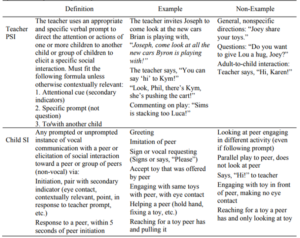
Participants
Table 2.
Teacher Participants
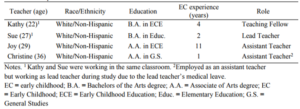
Table 3.
Child Demographics and Teacher Assignments

Data of Procedural Fidelity (PF) and Inter-Observer Agreement (IOA)
Table 4.
Averages and ranges for inter-observer agreement data across participants and conditions
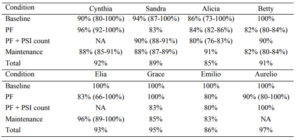
Table 5.
Procedural fidelity data across adult participants and conditions

Graphs
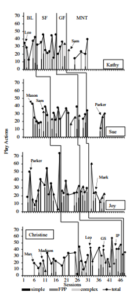
Figure 1. Frequency and complexity of play across all child participants. Simple play consisted
of sensorimotor play, relational play, and functional play. Complex play included object
substitution, imagining absent objects, and assigning absent attributes.
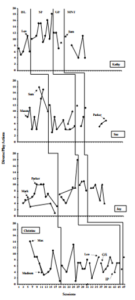
Figure 2. Within session diversity of play actions across all child participants.